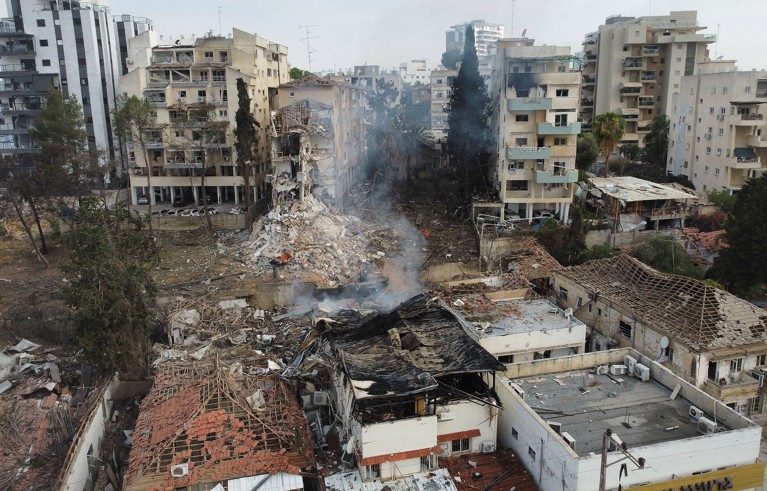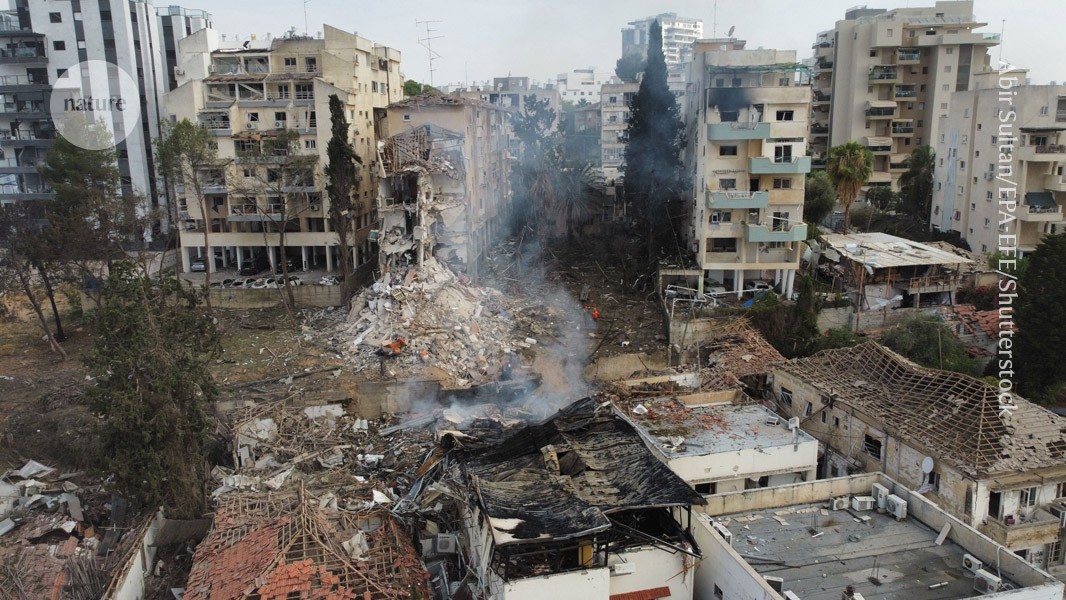
A residential area damaged by missile strikes in Rehovot, which also affected parts of the Weizmann Institute of Science.Credit: Abir Sultan/EPA-EFE/Shutterstock
Missile attacks have damaged laboratories and hampered scientists’ ability to do research in both Israel and Iran, as the conflict between the two countries enters its fifth day. In Iran, at least 224 people have been killed; in Israel, 24 have been killed, according to media reports.
Israel launched strikes against several Iranian cities early on 13 June, targeting nuclear facilities and killing several Iranian commanders and nuclear scientists. Iran — which is in talks with the United States about its nuclear programme — retaliated later that day, launching drone and missile attacks at sites across Israel. Both countries have since continued strikes.
Biologist Jacob Hanna was about to give a talk on a new technique for developing stem-cell-based mouse embryos at a conference in Hong Kong when his phone pinged with the news that Israel had attacked Iran.
“That threw me off balance a little,” says Hanna. Hours earlier, he had been informed by his university, the Weizmann Institute of Science in Rehovot, Israel, to evacuate all facilities, while his students scrambled to finish an experiment requested during the review process for a paper.
Flights to Israel had been canceled, so Hanna travelled to London to stay with a friend until he could work out how to get home. On that flight, he learnt from students that his lab had been damaged by a missile strike in retaliatory attacks launched by Iran. The Weizmann Institute is considered by Iran to be a military target.
Extensive damage
In the immediate aftermath of the strike, there was shattered glass everywhere, the computers weren’t turning on, incubators fell and the power went out. In one lab, the ceiling had collapsed, and the staircase had detached, Hanna was told. His students managed to save hundreds of frozen mouse and human cell lines by transferring them to back-up liquid-nitrogen tanks that Hanna had stored in the basement. “I was always worried that if a war actually happens, I don’t want to lose these.”
He now plans to fly to Jordan and then drive to Israel from there. The damage to the lab has probably set his research back about six months, he says.
In a message to researchers seen by Nature, the Weizmann Institute said the strike had caused “substantial damage” and affected most buildings. It advised that only authorized people are allowed on campus until further notice.
A spokesperson for the institute says that it is “in contact with the relevant security and emergency agencies, and is taking all necessary steps to ensure the safety of employees and the campus”.
Serious restrictions
Researchers in Iran have also been affected by the escalating conflict. They are avoiding in-person meetings at universities and have taken their work online, out of fear that their universities and research institutes could become military targets, says Abbas Edalat, a British–Iranian computer scientist and mathematician at Imperial College London. “It is a serious restriction” because researchers won’t be able to continue their lab experiments, he says. The disruption comes on the back of years of on-and-off international economic sanctions that have hindered academics’ ability to do research and travel to conferences, says Edalat. Iranian science is “paying a high price”, says Encieh Erfani, an Iranian cosmologist now at Perimeter Institute for Theoretical Physics in Waterloo, Canada.


